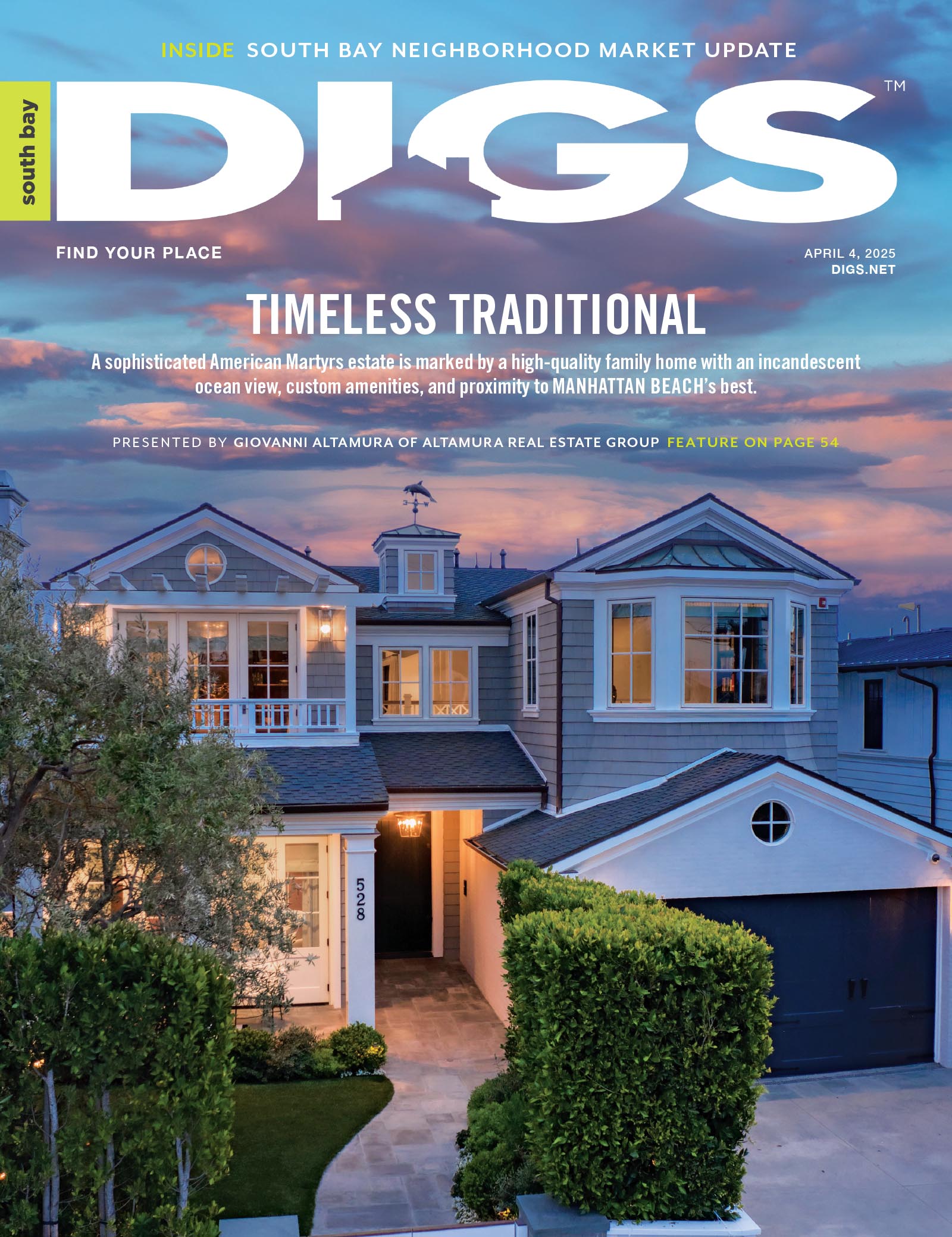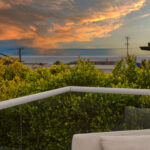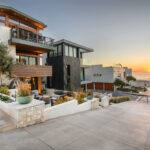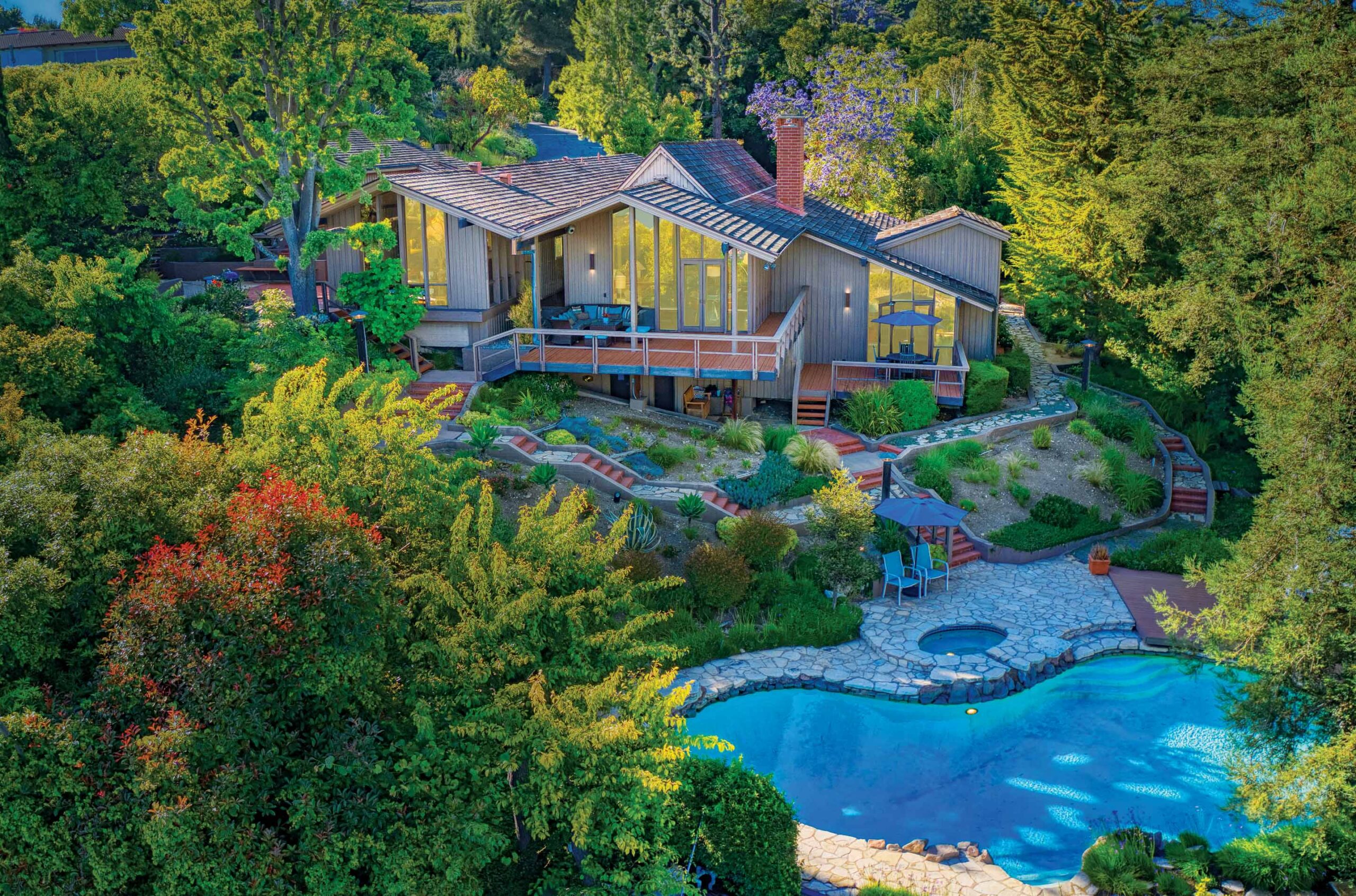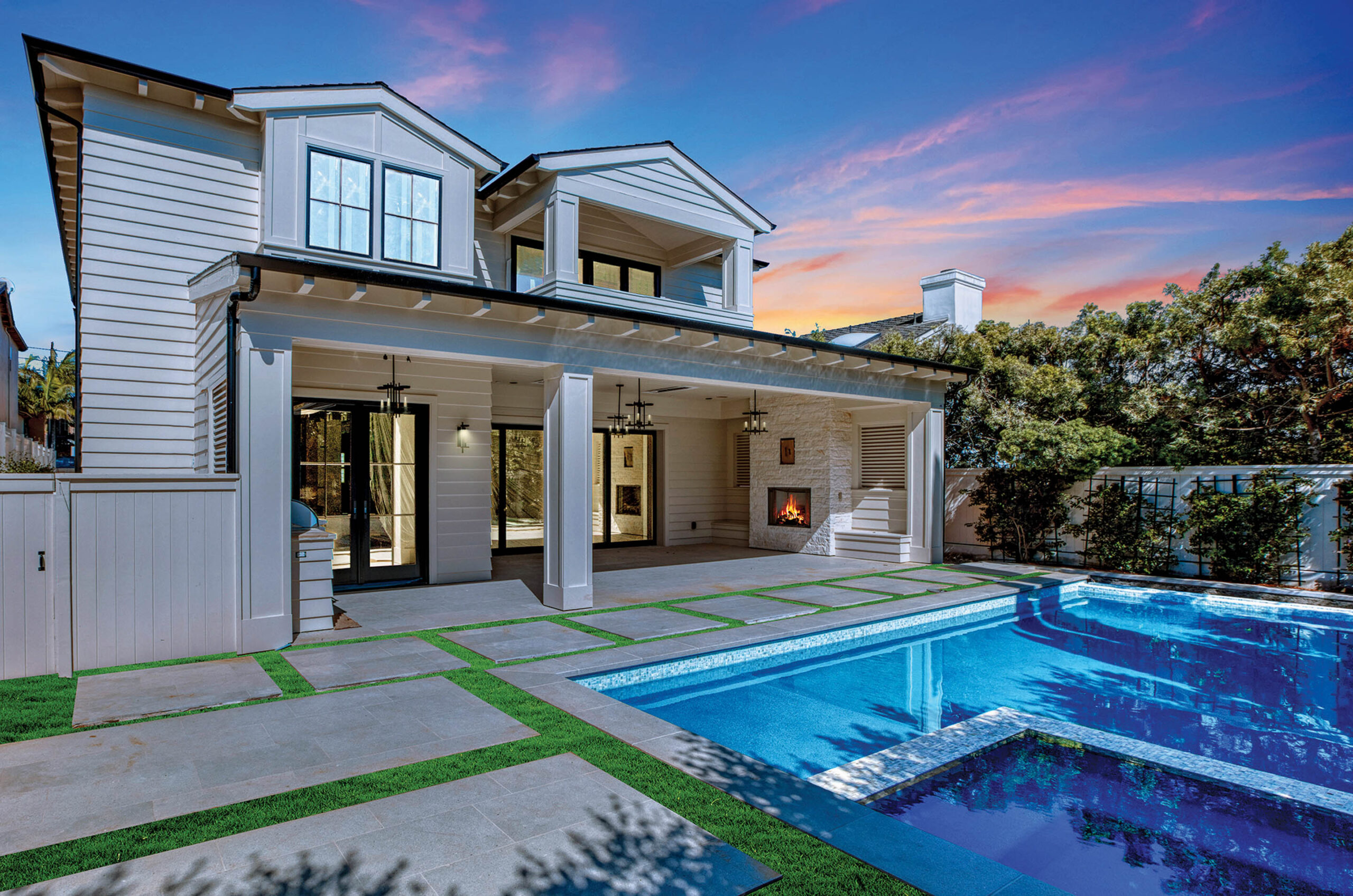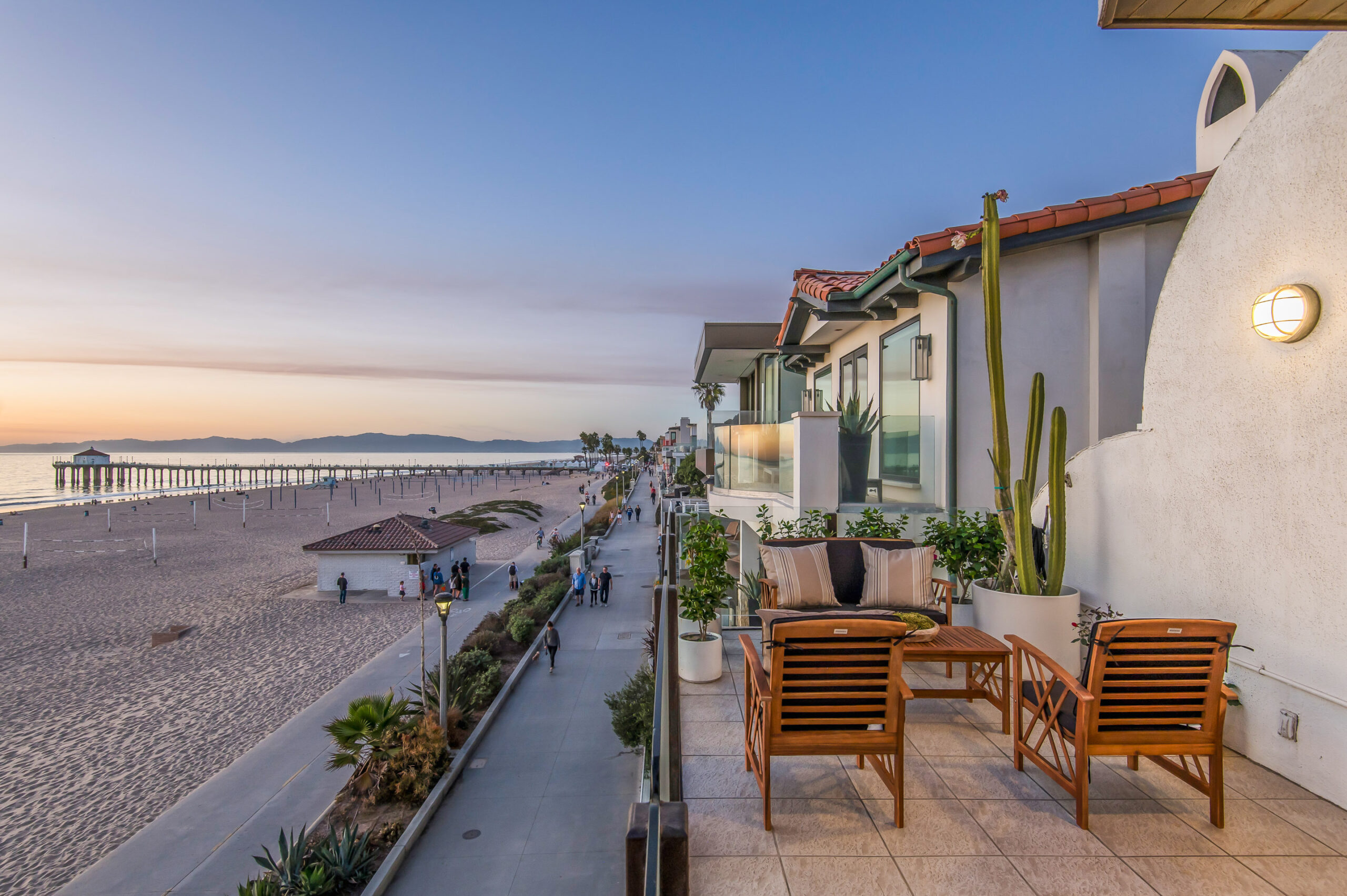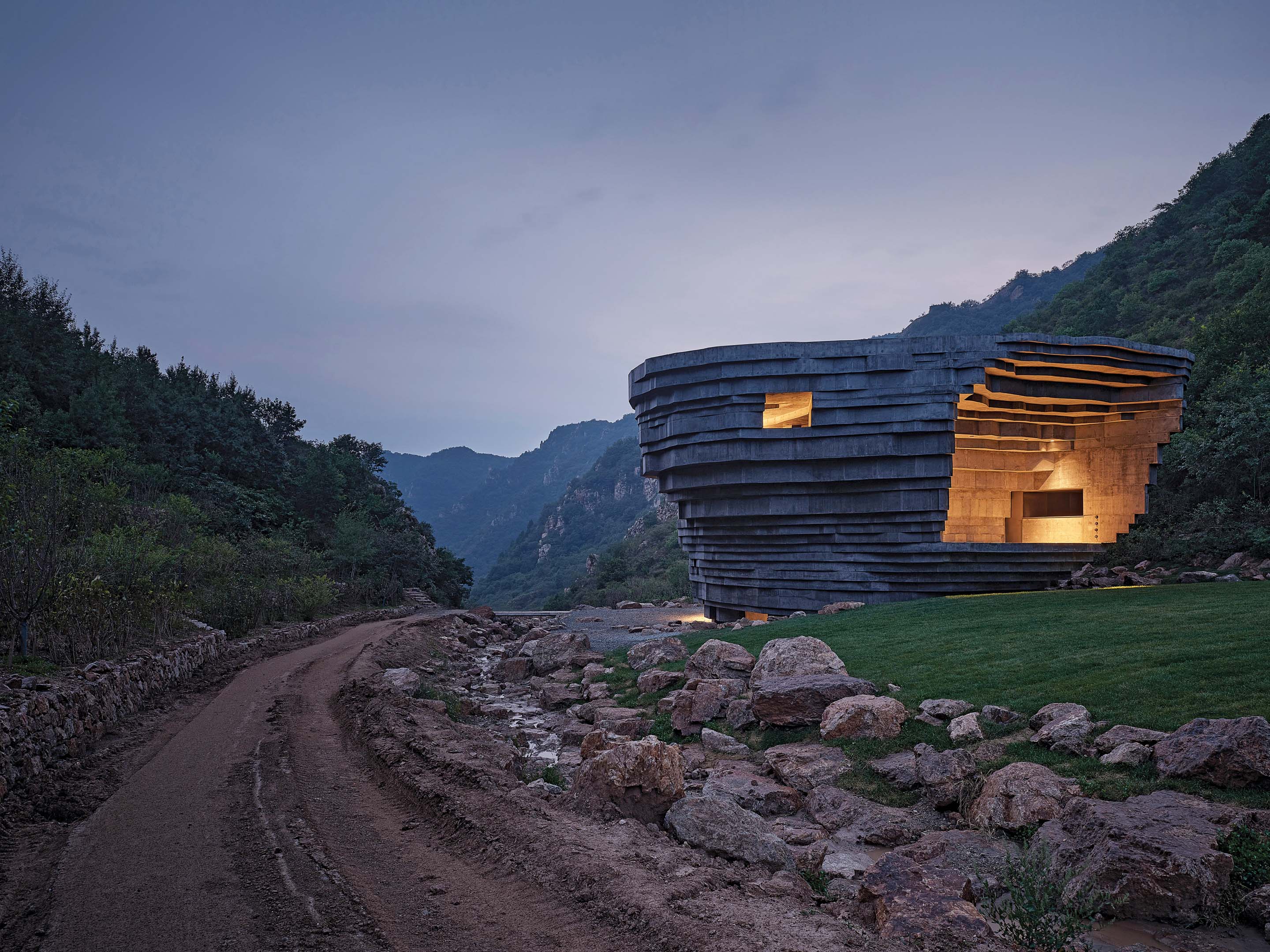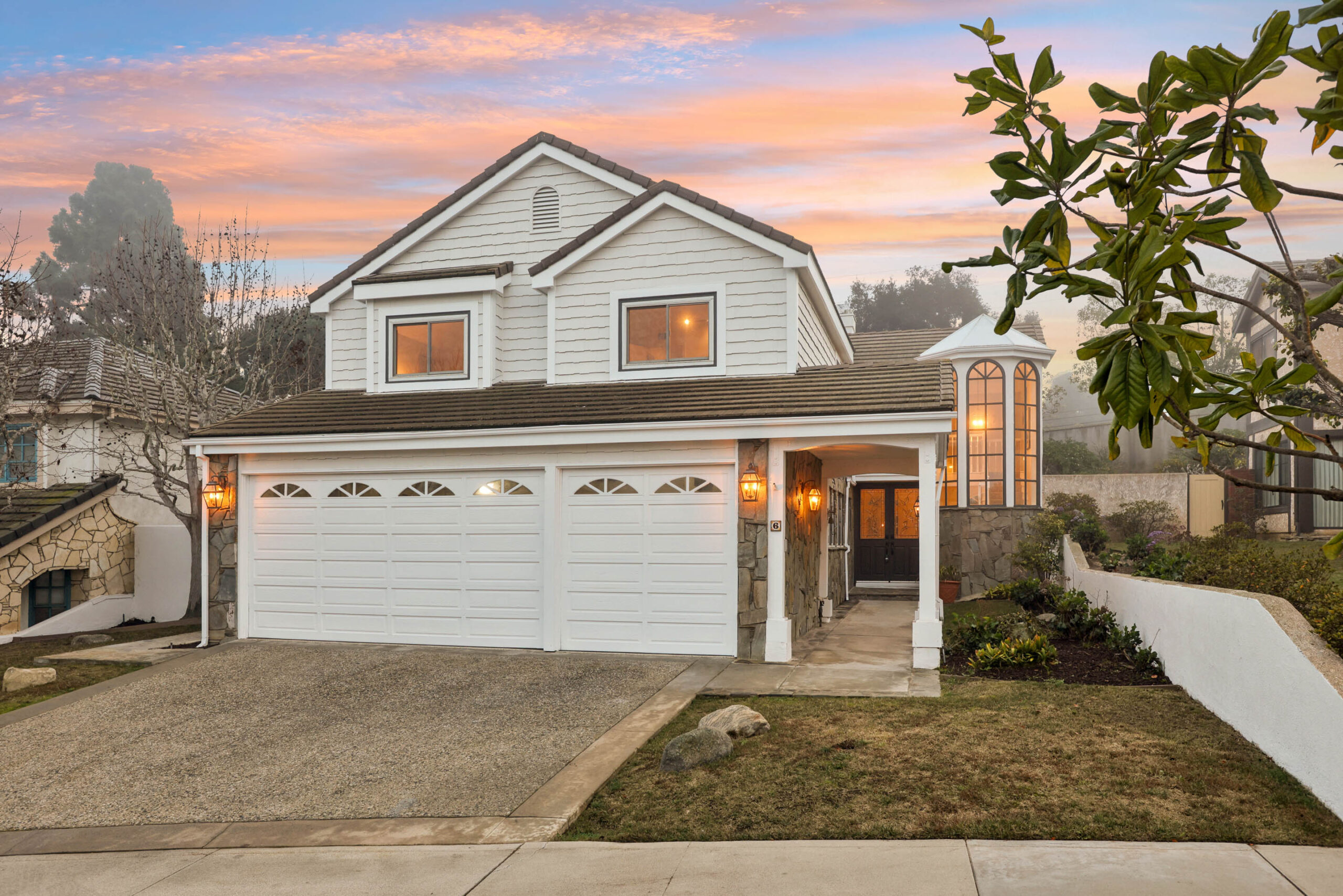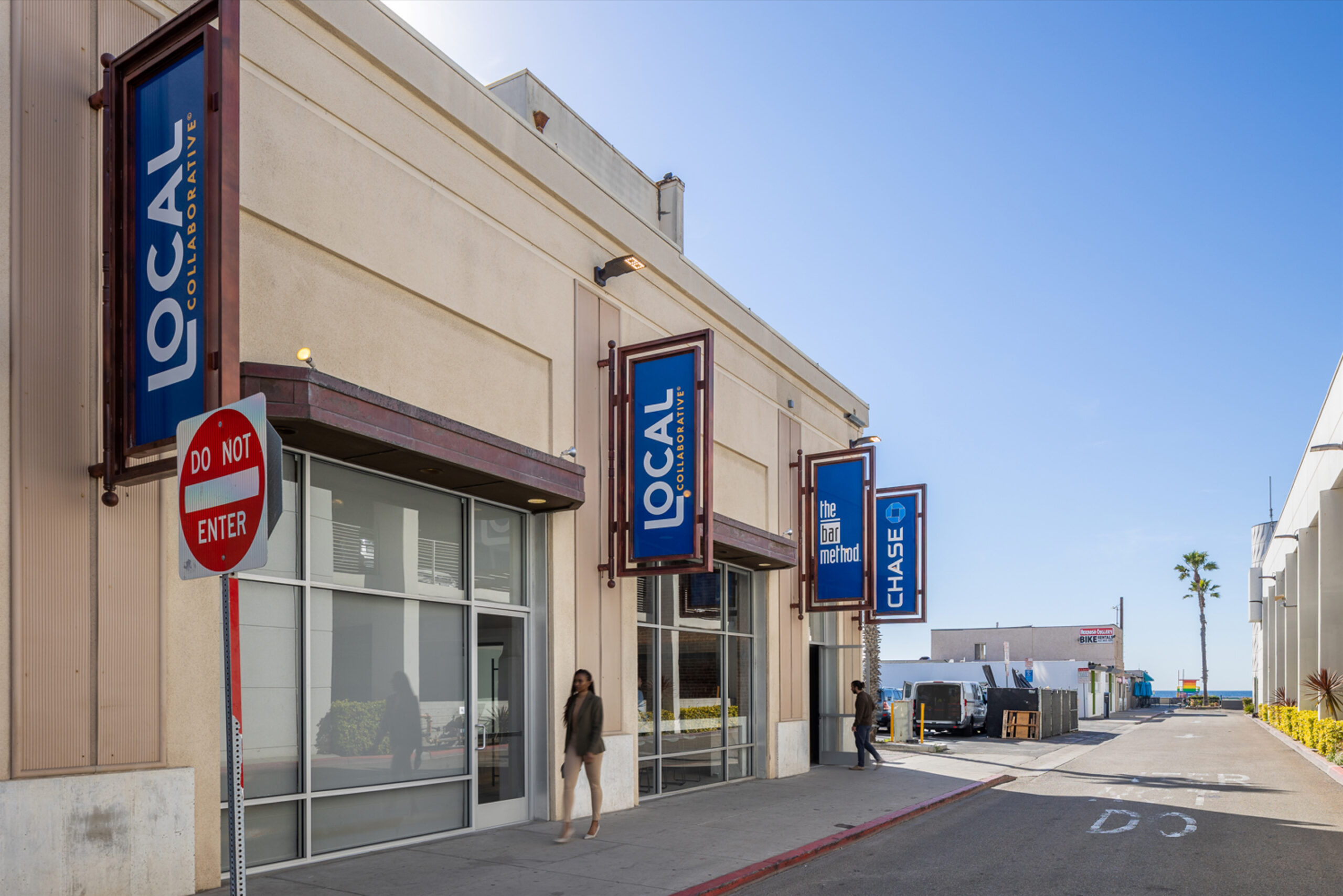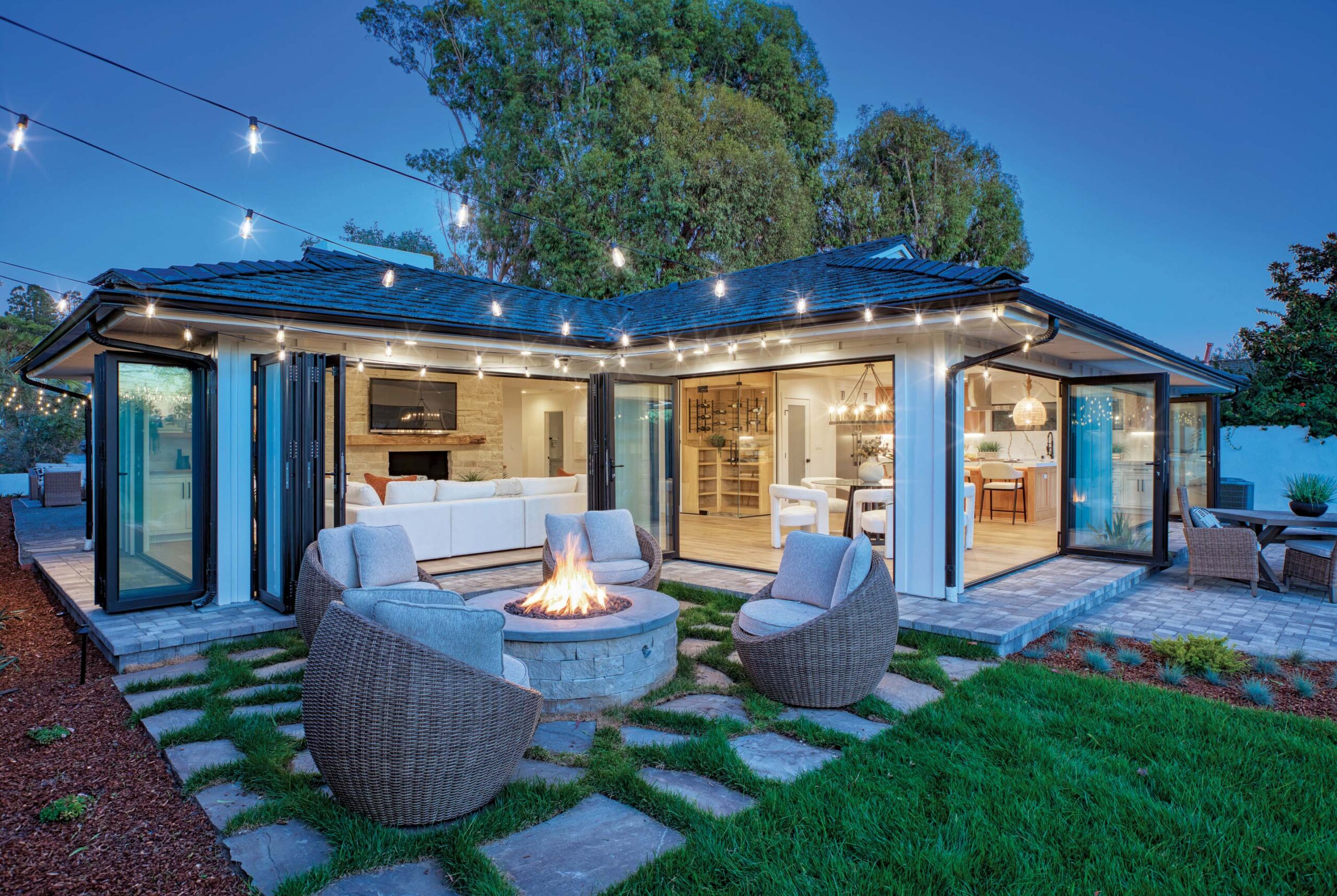In this Episode
Join us in this episode as we delve into the world of design and construction with Steve Lazar, a seasoned builder and home designer with over 30 years of experience. From his early years in construction, Steve Lazar developed a hands-on understanding of every aspect of residential building, which now informs his approach as a home designer.
Steve Lazar’s portfolio showcases a range of styles, from west coast modern beach chic to traditional architectural designs reminiscent of New England homes. However, what sets his work apart is his dedication to “Thoughtful Design” – a seamless integration of form and function that caters to each client’s unique lifestyle and family structure. With a keen eye for design innovation and a focus on livability, Steve Lazar has earned a reputation as one of the most respected designers/builders in his community, having created or remodeled numerous homes in Southern California.
“We’re a team of little sculptors, and we have this crazy piece of terrain. We spend months digging it up and making a complete mess of it. Then we spend another 16 months turning it into something.”
In this episode, we explore Steve Lazar’s journey from actor to construction laborer and ultimately to becoming a renowned builder. We’ll discover how his passion for artful living and innovation led him to establish Design + Build by Lazar, a signature design and build firm in Southern California. Steve Lazar’s mastery of both design and construction allows his team to offer a streamlined process, serving as both the designer and builder, resulting in truly remarkable custom-built projects that inspire all who interact with them.
“If I’m going to ask someone to sweep the floor, I’m willing to sleep the floor,” says Lazar of his leadership style.
But Steve Lazar’s story doesn’t end there. He now embarks on a new adventure in Park City, Utah, bringing his extensive knowledge and experience to the mountain community. With an unwavering commitment to timeless, visually impactful homes that meet the individual desires and needs of his clients, Steve Lazar aims to leave another footprint of his work for others to enjoy.
Tune in to this inspiring conversation with Steve Lazar, where we explore his unique approach to design, the fusion of indoor and outdoor spaces, the power of natural light, and the art of transforming setbacks into creative feats. Whether you’re a DIY enthusiast or a seasoned professional, you’ll find valuable insights from this discussion with a true titan of the trade.
Discover how Steve Lazar’s passion for design and construction has shaped his remarkable career and the extraordinary homes he creates.
“This has taken me like, 35 years, but the biggest problems that I incur on a project are inevitably going to become a feature that I’m going to be really happy with how it turns out,” shares Lazar. “I don’t get myself too wound up. That’s taken a lot of years to figure out because some of the worse things that can occur on a job site can inevitably become its finest features.”
Full Episode Transcript
Constance (00:02.366)
Welcome to Titans of Trade. I’m your host, Constance Dunn. And today we have a real builder’s builder plus an artist whose innovative custom luxury homes can be found from the ocean and increasingly in the mountains. Welcome Steve Lazar.
Steve (00:15.798)
Thank you, Constance. Thank you for having me.
Constance (00:18.026)
Yes, so quite a few years ago, I walked upon one of your new designs in Manhattan Beach, California, and I was very, very impressed by a couple of things. And one of the things I was impressed on was to see a builder, contractor, but you had your bags on, your framing boots were trashed out, and you clearly have the respect of your crew. And I think that’s very, very impressive because you’re not just like,
Constance (00:46.794)
Yeah, I’m like a designer and developer. You’re really in there doing it. So I want to hear about your origins in construction.
Steve (00:56.002)
Wow, yeah, the origins, I certainly started out at the bottom of the barrel. I was the guy who was made fun of. I was the guy who went and got coffee. And as soon as I was done getting coffee, they say, okay, now, just in order to get you off the project, let’s send you down to the hardware store and go get some, you know, go get some nails. What kind of nails do you want? Um, just get some nails. We just, we really just want you out of here. And when you come back, um, there’s a pile of.
Steve (01:25.078)
pile of shit over there. Can you move that or trash? I mean, go clean that up. Go do this, go do that. Lunchtime, they give me a list of things to go get for their lunch. And we’d all enjoy lunch together. And then we’d all get up to put our bags back on and go to work. And I would fall over because I’d grabbed my bags and they were nailed to the floor. So I mean, they truly, I was really the bottom of the barrel. I was just a
Steve (01:54.37)
grunt, but I was able to be a grunt and enjoy it because I was 18. I was outdoors. I was working. It worked very well with with my world and my life in college and whatnot, that I could always go to work and always have time to do what I needed to do if I had to, whether it be study or whatever.
Constance (02:16.21)
Right, right. Now, are you an LA boy? Are you a native?
Steve (02:21.438)
I’ve been here since 72. So I moved to LA when I was 11. And so I’ve been here for 50 years and I just now am on my way out the door. I’ve been here for a solid 50.
Constance (02:23.97)
Dang.
Constance (02:37.066)
Right, and you know what’s funny, especially just the South Bay and people who are listening, who are familiar with it, I’ve known a lot of people who were in the trades, but also surfers and tough guys who drove trucks around. And were you one of those guys?
Steve (02:51.074)
Tough guy, I’m not sure if that would be, but yes, truck and yes, surfboard in truck at all times because you sometimes don’t get to adjust your workday around the surf. Let me see. No, wait. I said that exactly wrong. You do adjust your workday around the surf. Cause if the surf is good, you go and then you go back to work.
Steve (03:15.866)
or you continue surfing if it’s really good and you just call in sick for the day. But yes, I did spend many a days surfing when I could have been working because you kind of have to go with with what mother nature dictates.
Constance (03:30.586)
Right, now were you a skateboarder as well, or are you a skateboarder?
Steve (03:35.546)
Not a skateboarder like today’s skateboarders, Tony Hawk, no way. Uh, I’m not like, um, uh, a freestyle skater. Um, I, I come back from the days of, of like, um, super surfer and stoker, um, Cadillac wheels. I mean, this is when skateboarding went from clay wheels and ball bearings, um, to polyurethane or, or urethane wheels and, and in case ball bearings.
Constance (03:39.063)
Hehehe
Steve (04:04.306)
And so that was the transition that I lived through, but I did not become like these crazy guys who go 30 feet in the air and are doing flips.
Constance (04:13.93)
Right, so you know, and it’s funny, the reason I’m bringing these up is because both of those worlds seem to have a lot to do with some of your designs. And people that might be listening to this, you are known, you know, the lifeguard tower in Manhattan Beach, that’s a very significant piece of work that’s yours. And it really ushered it in my eyes, this idea of these visual references. Of course, it references the lifeguard tower.
Constance (04:40.13)
but you brought in certain elements, certain features in that work, which I would see in other works of yours, but also I would see in then other works in the South Bay that had some similarities to something that you could kind of put on the map. And I was curious about in that home, the lifeguard tower, and if we do have a picture, it’d be great to throw that up. If you’re watching this on YouTube, you will see it. If you’re not, check it out or.
Constance (05:06.518)
Check out the lifeguard tower, really interesting piece of architecture. Some of the features that you integrated in there that you saw that became kind of standards, we’ll say, in luxury modernist homes.
Steve (05:22.11)
Lifeguard Tower was a concept waiting to happen. It was always in my mind. It was always something that I wanted to be able to put together. And when I found this piece of property, I was just waiting for the right venue. That was all it was, just waiting for the venue. A corner lot is clearly…
Steve (05:45.99)
a designer’s dream because you get to see the house from multiple points of view, not just from the front, but in this case, you could see it from three points of view. The downward sloping terrain made it so magically perfect that I could do more of what I wanted to do just based on the terrain and then the underground parking and the whole house being built on stilts.
Steve (06:15.146)
the perfect location when the time came. I, it was just like magic. This is it. And finding a great location is really hard to do, especially in the beach cities because the locations are so limited. I mean, that’s like, that’s square, the square footage of that piece of property is 2,400 square feet. Yeah, that’s a 30 by 80 lot, 2,400 square feet.
Constance (06:24.159)
Mm-hmm.
Constance (06:27.694)
I’m going to go ahead and close the video.
Steve (06:45.034)
So I had the minimum amount of space to figure out what can I do. And now that I’m here, now that I work in Utah as well, I’m working on two acres. So the creativity is absolutely, there’s no more restrictions. It’s like the sky’s the limit. Do what you can.
Constance (06:50.846)
And what was…
Constance (06:56.872)
Mm-hmm.
Constance (07:04.15)
And so on the lifeguard tower, what how much square footage of living space did you get out of that that little lot little lot? Dang.
Steve (07:11.17)
about 3,400 square feet because it’s layered into a basement and then a living level and then a great room. And then the crow’s nest on the very top is one room with a bathroom and then a walkout deck that’s about 1,200 square feet with an unlimited view of the ocean from the south to the north.
Constance (07:33.55)
And the Crows Nest, I saw you had this feature in subsequent designs, because you’ve done a lot and they’re all very different and beautiful. But one of the things I never forgot that you told me the first time I went onto one of your job sites to interview you for a project, you said something to the effect of.
Constance (07:51.446)
Yeah, people put decks, they put outdoor spaces, but there’s gotta be something to do up there. Otherwise, they’re gonna go up a few times, watch sunset, have a glass of wine, and never go up there again. So you are like a master of creating things to do in open air spaces. And I just love that that was one of your ideas, because I always look for that now. So that’s not a question, but.
Steve (08:15.382)
Well, thank you. I think what you’re referring to is in the beach areas, especially in Hermosa Beach, you’re allowed to have rooftop decks. But just to have a rooftop deck, to say I have a rooftop deck, is a novel idea. And yeah, you’ll go up on the rooftop deck and you’ll enjoy it the few times that you go up there. But you’ll find that if you’re constantly going up and down the stairs to get onto the rooftop deck,
Steve (08:41.674)
because, oh, I need a beer, oh, I need my dinner, oh, I need this, oh, I need that. You’re gonna eventually just never go up from the rooftop deck again. So the design of the lifeguard tower because the way that the planning department allows you to design in this particular city is based on the elevations around you. So I was able to fit the lifeguard tower crow’s nest up.
Steve (09:10.486)
because the elevation is still within the 30 feet in the back. And it still works with the elevations in the front. The reason it’s important to have a living space on top is that’s where your music comes from. That’s where you have a bathroom. That’s where you have a built in bar. That’s where you have a television. That’s where you have living space. That’s where people can come in and out of the outdoor space through the living space. And it makes that
Steve (09:40.21)
upper deck so much more enjoyable. I mean, that’s pretty much the best way I can describe it.
Constance (09:47.55)
And it becomes part of the house because oddly enough, another one of your homes, it was in Hermosa and I can’t think of the address right now. Yes, because it was one of my first articles or covers for digs. And I remember interviewing the family and it was really cool. You were just a name to me. And the thing is, is that the homeowner, they loved that house so much. And she showed me the upstairs, the crow’s nest or what you did up there.
Steve (09:54.495)
There’s Manhattan Avenue.
Constance (10:14.258)
And I remember just seeing how you had tucked storage space in there. It was like a Swiss army knife. It was extraordinary. But she said Saturday mornings and Sunday mornings as a family, we are up here hanging out, reading the paper, drinking coffee. And I thought, what a beautiful space you created that this is not just. Forget an afterthought. I mean, this is a destination for this family to have these remarkable gathering spaces and unforgettable times up there. It just was so cool.
Steve (10:44.99)
was also the fourth stop of a four stop elevator. So incorporating the elevator into the whole design from beginning to end was important. But yeah, in order to enjoy outdoor space, it has to straddle indoor space. I mean, it’s critical. And in anything that I design, the outdoor space and the indoor space need to become one way or another.
Steve (11:11.734)
whether it’s on the top of the house, or it’s in the back of the house, or it’s on the side of the house, or it’s in the front of the house. If you incorporate the indoors and the outdoors with sort of a disappearing wall, it helps make the house have an expansion that is, well, it’s necessary. Because if you’re just enclosed by four walls, what do you have? At a window,
Constance (11:36.13)
Mm-hmm.
Steve (11:39.21)
you have a picture into the outdoors. If you have an entire glass wall, then you’re missing a wall and that’s kind of a incredible feature. But if that floor also extends beyond that wall and you have a deck from that room, now your room has a vast sort of, it’s like you’re defying one wall of the room.
Steve (12:08.691)
and the space becomes magical.
Constance (12:11.166)
And I love that. And this is for people listening. This is not just for warm weather locations because you’ve recently moved to colder locations where you’re doing the same thing. You’re really just transposing these concepts into a different canvas. But before we move on from the lifeguard tower and some of your ocean, not just the lifeguard tower, it’s a theme that you see in your work in your portfolio up on the, up on the crow’s nest, you do something interesting with
Constance (12:38.658)
Windows and that’s another aspect taken from lifeguard towers. What do you do with the windows up there you make?
Steve (12:46.09)
All those windows are sloped at seven degrees, which is the actual opposite of the base of the building is at seven degrees. The posts that hold up the front of the house where you drive under the house, get the garage are also at seven degrees. So I flared them at seven degrees because when in a true lifeguard tower, if there’s glass, you put the glass at an angle.
Steve (13:14.45)
so that it eliminates a lot of glare. So that they can actually see, they can actually see what they’re supposed to be protecting is people on the beach. So that was, you could say, a whimsical or gimmicky or whatever, but I think it added to the definite flair of what the house did, because the house came out of the ground at seven degrees. And then when it got to a certain collar point,
Constance (13:17.038)
Yes.
Steve (13:42.05)
or area where it was kind of like, then it flared out at the opposite seven degrees. And then I did the really, really narrow Eve line where the copper came to a razor’s edge. I mean, it comes to a point that is so sharp. So that was all just part of the feature to give it flare. I mean, if you don’t have flare, what do you got? You just got a box.
Constance (14:07.127)
Yeah.
Constance (14:11.05)
Yeah, but it’s more than flair, it’s practical as well. And I’m sorry, the windows, there was something about them. They weren’t just sliding windows. You have them like, when you go to open the windows, there’s something unusual about this too.
Steve (14:25.166)
Right. Because the windows are at an angle, there’s two things. They have a material on the outside that’s reflective. So that when you look up at the house, it’s reflective. You can’t see into the house unless it’s nighttime when the lights are on and it’s dark outside. Then you can see in. But when you look during the daytime, a lot of those reflective glass pieces. And then the door, because the door…
Steve (14:53.51)
is at the same angle, I had a hydraulic system where the main door was pieced into three pieces. It had two suicide doors that were opening towards each other. And before you could open those two doors, you’d have to disconnect the main top of the door and it was on hydraulic lifts and it would push up. So you would walk under the hydraulic lift and the two doors would open.
Steve (15:22.174)
And now in order to make this work really well because of weather, it was, of course, underneath an incredibly large Eve. So that when there was, you know, obviously weather problems, it worked out fairly well.
Constance (15:22.183)
Interesting.
Constance (15:35.87)
Right, right. And it’s funny because I could talk to you for a long time because there’s so many other things that are coming up about how your homes have a tendency to look even more beautiful as they were and the things that you’ve done to create that with the copper and so that’s just another thing that you were integrating very early on. I want to talk about, is it Deer Valley?
Steve (15:59.554)
Deer Vista is 10 minutes east of Deer Valley. So there’s a little preserve, a little HOA called Deer Vista.
Constance (16:02.719)
Okay.
Constance (16:06.11)
Okay. And so I thought when I heard that you were building now in the mountains in a different territory, I’m like, wow, I think of him so much like a beach designer, beach builder, but what you’re doing there has a lot of similarities to what you’ve been doing in your career in California. So I’m curious about how you’re integrating the outdoors, how you’re connecting indoor outdoor in Deer Valley, which is by, it’s by, by park city around 20 minutes, right? Outside of park city, Utah.
Steve (16:36.182)
It’s just 10 minutes east, 10 minutes east of Gear Valley and 10 minutes east of Park City in slightly different directions. So the concept is very similar. The idea is a house should be evolving out of the earth. Instead of being placed upon the earth, if it’s evolving out of the earth and it becomes sort of like connected.
Constance (16:37.583)
Okay, 10 minutes.
Steve (17:02.562)
to the atmosphere, I think it adds to the flair. The more indoor outdoor that I can create, the bigger the inside of the house becomes. Because if you’re missing one wall and you’ve got a vista of mountains 50 miles away, then you have these rooms that are completely private to whoever’s in the room, but wide open to the vista. So the indoor outdoor,
Steve (17:32.498)
Necessity is even more so because you can look in almost any direction and have a great vista. The only thing I don’t want you to see is a neighboring home that’s too close by or something that maybe is not a good sight line, whether it would be a freeway or a little development or something else. So when we get to…
Steve (18:01.502)
that point in the framing, we might raise a sill or change a location of a window slightly this way or that and say, this is the picture I want.
Constance (18:12.966)
And here, remind me of what, there are some really fascinating things you’re doing, because I was thinking, wow, it’s going to be freezing like January, but you’re still going to be able to access nature in this house. How are you able to do that?
Steve (18:29.514)
Well, other than just the winter months, I mean, all year round, Utah is an amazing area for outdoor sports, whether it’s in the winter and you’re snowboarding or skiing or you’re ice skating or you’re, um, walking in the snow. I can’t tell you how many people walk with snow shoes on or go cross country skiing. I mean, it’s clearly something I wouldn’t do because it looks way too hard, but
Steve (18:58.038)
These are outdoor people. And then for maybe two months of, of the spring, in fact, right about now, most of main street in park city is closed for about two months until the summer season starts. So this is the muddy season. So it’s a little bit muddy now and it makes it a little bit harder to enjoy the outdoors because the snow is melting and. It’s not yet summertime, so it’s the muddy season. So there’s not as many people around, but come summertime.
Steve (19:28.47)
hiking, biking, horseback riding. And then when you bring it back to the house, the whole indoor outdoor is totally important because if you open up all the doors to the house and you bring the outdoors in, your house is just much more grounded in your atmosphere.
Constance (19:51.946)
Right, right. And you’ve didn’t you do something in the house that you have like sliding walls of glass or something and remind me of that or you have
Steve (20:02.078)
Yeah, on the far left and the far right of the picture you’re looking at right now, the far right is the master bedroom. The master bedroom is surrounded by that focal point, which is a fireplace to the left and to the right of the fireplace or bifold doors and glass returns a glass clear story so that when you open up those doors, then that deck becomes part of the bedroom.
Steve (20:28.382)
Similarly, on the left side and a much smaller version, that’s the guest suite. So notice the guest suite is clearly on the other side of the house. If you look to the right of the guest suite, you see a set of stairs right behind that very vertical glass. Those are the stairs that take you downstairs. Well, just beyond those stairs is a bridge that takes you from the great room to the guest suite. So as you walk across that bridge,
Steve (20:57.97)
It’s almost like you’re walking outdoors because that atrium below you is going to have the capacity to have 20 foot tall trees and foliage. So as you walk down those stairs to go to the kids level and just a whole other section of the house, you’re walking through a huge atrium.
Constance (21:17.602)
Right, and that’s something that I’ve seen before in your works. One of your homes, the butterfly house, I believe, had a tree inside it growing up, is that right?
Steve (21:27.006)
Yes, yes. The whole house, the whole butterfly roof house was designed around, again, this whole idea of how do we, how do we integrate indoors and outdoors in such a way that will make the house, well, it just, it kind of has a special sort of an aura. You know, of course I didn’t want it to become gimmicky. And it didn’t, but it’s a really interesting way to.
Steve (21:56.226)
put those two elements together. Because again, I tell you, if you confuse the indoors and the outdoors, whether that means bringing outdoor features into the house or making it so that the indoors and the outdoors become one, one way or another, it’s, well, it’s just my style.
Constance (22:16.958)
It is. And one of the things that I happen to see on here is the amount of glass. So the glass, I guess, industry has innovated enough that this is feasible. I just think that’s extraordinary, because 100 years ago, you wouldn’t be able to have this in Utah. Is that accurate? I mean, what’s going on?
Steve (22:35.89)
No, that’s totally accurate. The two things that become the real part about glass is where there’s glass, there’s no structure. Where there’s glass, there’s a lot of heat exchange, whether it be winter, cold or summer heat. So we now have dual glazed glass and they get better and better and better thermal capacity glass so that we can always keep our houses nice and cool in the summer and very warm in the winter.
Steve (23:03.97)
The other part about when there’s a lot of glass, it means you have to have a lot of steel, because when there’s glass and there’s no wood, as in panels, you have to replace the panels of a traditional house with steel so that you have lateral support. Because even though in Utah, there’s no earthquakes, there’s still a lot of snow load, there’s wind shear.
Constance (23:21.784)
Yeah.
Steve (23:31.134)
there is some sort of movement. So you have to have the house engineered with lateral support. And so the more glass that you have, the more trickier ways we have to create lateral support versus you do when you see a traditional home where there’s a lot of panels of whether it be brick or siding or stucco or whatnot, and then placed windows here and there. This is the south elevation of the house that you’re looking at right now.
Steve (23:59.606)
And it’s directly facing a perfect trajectory of the sun from morning till night. And it’s facing the Jordanelle reservoir. So it’s an amazing view. And just beyond it is snow capped mountains. So you don’t want to have anything but view.
Constance (24:14.658)
Right, right.
Constance (24:19.578)
Right, right. It’s really fascinating. And you’re able to, I know one of the things that’s you can do is you’re always pushing the envelope. Your houses look very different than other homes, even in areas where there’s a lot of like architecture and very thoughtful design going on. Yours always look a little different. And I’m curious about the inner experience of being a builder.
Constance (24:47.858)
and a designer when there’s a lot of money on the line, there’s investors, there’s a timeline, there’s profits, you have to consider all those things and you’re gonna go, hey, I’m gonna do something we’ve never done before. Is that a scary feeling? Are you addicted to that rush? What’s that like? Cause I would be just like, yeah, we’re gonna do this thing really basic. I want the sure thing. I’d be freaked out, but you’re not. You like it. Tell me about it.
Steve (25:18.178)
Well, because I’m creative by nature, as I live through a building, a lot of things come to me while I’m there. Okay, oh my God, this would be so perfect. Let’s do this. We’ll do this and then we’ll let it do that and then we’ll extend it over to this and then we’ll do that. So like for instance, at the house that you just had a visual of, that house, that piece
Steve (25:47.242)
two different planes of topography coming together. So clearly that was a water path for thousands of years through the entire HOA. Okay, and so because those two planes came together, the natural inkling is to put a water feature above the house that pours into an area right by the front door, and then
Steve (26:15.838)
When you go to the other side of the house, because the topography comes together in that same natural V, it would make so much sense to have another water feature look like it’s coming underneath the driveway and the motor court, and then it pours out on the other side. So you’re going to create visual and you’re going to create great sound and sound is another great thing to utilize.
Steve (26:42.21)
to create a house, to give it a liveliness. As soon as you add water, the house has a whole new transcendence that you just can’t argue with. So that’s what I would do there. And these are the kinds of things that go through my mind. And so when I have to go back to my investors or to the homeowners, they’re faced with this.
Constance (26:53.806)
Wow.
Steve (27:07.05)
passionate crazy guy who wants to do this and they immediately say, well, how much is that going to cost? And I’m like, well, okay, it’s going to cost like this, but the value added could be this. So you decide, I mean, if you think that this is going to be a feature that’s going to sell the house, what does it matter what it costs? If it costs a hundred thousand, but you’re going to get $500,000 more for the house, that’s a good investment.
Constance (27:18.911)
Right, right.
Constance (27:35.278)
Right.
Steve (27:36.458)
that sometimes that can be very difficult to pull off.
Constance (27:42.034)
Right. Well, now you have a portfolio, you’re established, and I’m curious in the beginning, because was the lifeguard tower, no, you had done work before, but was the lifeguard tower like your first big build or had
Steve (27:56.162)
That was the first big build that I really got to exercise my talent. Everything else before that was really limited, but I’d always do what you quoted earlier. I’d always try to create a Swiss army knife element where I would stuff a whole bunch of cool little features into one little space so that it was like, wow, this is really cool. But it also is totally functional.
Constance (28:04.034)
That’s cool.
Steve (28:24.938)
I mean, you know, when I was, when I was, gosh, when I was, when I was seven or eight years old, um, I, I, I designed sailboats. I mean, I, I was fascinated with sailboats because my parents had a sailboat and we sailed. And so I would, I would draw floor plans and elevations of sailboats, never knowing that this compartmentalized design element that was kind of like going through my head.
Steve (28:54.89)
was gonna become my career 50 years later.
Constance (28:58.882)
Right, right. And I have to add, this is one of your projects, another one in Manhattan Beach. People do this now regularly, but I remember seeing it on your projects where for instance, you would add a material that is typically used on the exterior of the house, and then you’d see it on the interior as well. I know that’s a thing that’s done, but I remember seeing like shiplap and how pretty it looked years ago, years ago. So just something.
Steve (29:24.778)
Well, I mean, if you can, if you can reintroduce this, the lifeguard or this is the butterfly roof house right now. And if you can reintroduce an exterior element on one or two feature walls inside the house, then it becomes just that a feature. If you do it too much, I think if some is good, more is better is really not the way to go in order to create a feature. It has to be just that a feature.
Constance (29:49.003)
Right.
Constance (29:52.907)
Right.
Steve (29:52.958)
So it’s very important to have a…
Steve (29:58.978)
to know when is when, you know, when is when is like restraint, architectural restraint, having having Okay, it’s enough. Because if you just keep doing it, it just it’s like, oh my god, it’s just too much.
Constance (30:01.567)
Yeah.
Constance (30:11.223)
Right.
Constance (30:17.554)
Right. And I remember you saying that to me once. I’d be curious about how many houses of yours I’ve written about because they’re always curious. And I always like to go to the job site because you point out this, the minutia and the reason why you did it. And it was always fascinating to me, the thoughtfulness behind it. But going back to that, I remember you saying something like, you have to know when, when is when, or when, when you’ve reached like the point, how do you know that now? Is that now an intrinsic thing? You just know.
Constance (30:46.326)
when enough is enough.
Steve (30:49.318)
A lot of times I just have to sit and stare at things and decide when is enough is enough. I mean, like, for instance, in what we’re looking at right now, I look at it now and I think I may have pushed the envelope, maybe just a notion too far, because that mangaris would I mean, when you look at this house from straight on, it looks like, oh, it’s just all this mangaris and look at the ceiling, the eaves, everything. It’s just like it’s overdone.
Constance (30:51.827)
Mm-hmm.
Steve (31:18.558)
you walk around this building, it works better. Maybe if I would have looked at this year, this house is 20 years old. If I were to redo this again, I might change the direction of the wood on the upper area that’s most closely towards us on the upper element with those two windows in it. But knowing when to do it,
Steve (31:48.19)
That’s just a matter of, that comes with experience. And I do believe that less is more is very important. And people don’t even understand when less is more works, it’s because they don’t notice something is overdone. It’s so easy to see it if it is overdone. If it’s not overdone, then it works.
Constance (31:52.072)
Okay.
Constance (32:06.722)
Mm.
Constance (32:13.61)
and why Mangares would on this build.
Steve (32:16.65)
Mangarrus wood at the time was like poor man’s teak or poor man’s mahogany. Um, it was readily available. It was in the teak and mahogany family. It, it, it behaves like teak and mahogany. Uh, but at the time it was a much better price point than teak or mahogany. So it just was the one to choose. As, as a point of reference, just on the butterfly roof house that you’re seeing there, um, all those.
Constance (32:21.134)
Hmm.
Steve (32:46.498)
brown colored posts are steel in the front section. And then if you look back behind that, then you see all that black. So the black behind it is the actual glass and the inside of the house. The part that is projecting out is actually the outside of the house. And you don’t recognize that till you go through the doorway in the center.
Steve (33:13.298)
and you go under that and then you realize you’re under this entirely huge butterfly roof and you’re protected from all the rain, but you’re still outside the house.
Constance (33:24.874)
And that has something to do with the rationale with your decision. The slope of this home is very, the slope of the roof is very unusual. And if anybody is just listening to this and just check out the, is it called the Butterfly House in Manhattan Beach? How would they find it online? Okay. Right.
Steve (33:41.886)
Yeah. Butterfly roof house in Manhattan beach. And there’s two things going on. It’s not only a butterfly roof, but it’s also sloped at a quarter inch per foot backwards. So that water not only travels into the center, but it travels backwards. And then where all the water collected, I had like a four. It was not redundant. It wasn’t, it was a double redundant drainage system.
Steve (34:11.446)
with overflows so that all the water that drained, drained out to downspouts and out to daylight. And never once in 20 years have I had a call regarding any water problems with this roof. But it’s sloped backwards, which helps direct all the water to one area.
Constance (34:34.466)
I see. And why would you don’t see butterfly roof houses very often? Or is that was that’s one of the reasons why would one choose that silhouette? aesthetics?
Steve (34:47.166)
Well, it’s two things. The eve is facing upward instead of downward. If you have a downward eve, the sun goes away much earlier in the day. If your eve is flared upwards, then the sun lasts a lot longer. So the natural sun and its natural indirect sun still works longer in the day, is a function. It’s also, well, it’s a style.
Steve (35:17.582)
And believe it or not, in contemporary homes, and I see a lot of it in Utah now, um, butterfly roof systems are used a lot. Oh, they are. Even with a snow load, you have to have a snow load of 200 pounds per square foot. And they’re still used a lot because I mean, you think of it, geez, where’s the snow going to go? It’s just going to sit and collect, but you still see them a lot.
Constance (35:29.118)
Are they? Okay.
Constance (35:37.674)
Alright.
Constance (35:45.41)
That’s awesome. You know, it’s funny. Um, I think the mountains you’ve been spending a lot of time in Utah, it agrees with you, you have like a Josh Brolin thing going on visually. It’s really interesting. Cause the last time I saw you were like a surfer skate South Bay, dude. It’s just interesting. It agrees with you.
Steve (36:01.898)
Well, I’m also, well, thank you. I’m also getting certainly older, but yeah, no, I enjoy the rugged terrain of Utah and I’m gonna let my hair down.
Constance (36:17.186)
That’s cool. Well, it’s funny, I want to do a bonus round and ask you some quickie questions, alright?
Steve (36:22.814)
Okay, so I get like 10 second answers.
Constance (36:24.874)
No, they can be longer, but because I could talk to you about building and design because it’s very interesting going through one of your builds with you. The things that are pointed out, like I’m just going to, okay, I’ll just add one more. One of your recent homes in Manhattan Beach. I loved the homeowner. She’s a filmmaker and she’s from Eastern Europe, I believe. And she showed me how you integrated, I believe it was crystal and gold together because that references
Constance (36:53.742)
her homeland, but you had done it so cleverly and so subtly because you think crystal and gold, the super modernist contemporary home, but I’m like, how Steve Lazar to be thoughtful in that way and integrate it very skillfully. So it’s not like you’re getting gnarly gold chandeliers. It’s just like, ah, that’s Steve.
Steve (37:14.834)
No, it was kind of a risky move because it was something that I knew would appeal to her, but it was really pushing the envelope for me. And then on the same house, without really being a part of the original design, an idea came to me on the walkway from the pre-entry or from the street to the front door, and I made street lamps.
Constance (37:20.398)
Right.
Steve (37:41.866)
So there was 11 street lamps that lined this whole walkway to the front door. And when they were finally done, custom built, installed and glowing with nice low voltage lights, she looked at them and she opened up her phone and showed me what street lights in Czech Republic look like. And she said, how did you know? And it was.
Steve (38:10.166)
Just to sit, I mean, it’s cause they’re very simple, but the idea that they looked like streetlights from Czech Republic reflected an image that she enjoyed. And it just was one of those things that happens while I’m on the job.
Constance (38:27.262)
Is there like a moat in that house?
Steve (38:30.582)
There’s not a moat, but it was referred to as in Manhattan Beach as the house with the moat around it because the basement level, probably two thirds of the way around the entire basement was foliage. So that even though you were 11 feet underground when you were in the basement, there was so much foliage and so much natural light coming in that it felt like you were
Constance (38:50.604)
Yeah.
Steve (39:00.398)
surrounded by a moat, even though it was really just an atrium.
Constance (39:05.25)
And that’s extraordinary because there’s lots of lower levels. And I know that’s another area of expertise that the gnarlier the elevation is and the gnarlier the dig, you know, the subterranean ness is the more you’re going to have fun. And that’s an extraordinary lower level that you there’s no way it’s like there’s greenery and sunlight blasting in in a beautiful way. It’s just very that’s nice job is what I’m saying.
Steve (39:32.202)
Thank you. It’s a basement without being a basement.
Constance (39:36.062)
Yeah, it’s like, that’s why it’s funny. I always call those lower levels because I’m like, it’s not a B, because basement immediately evokes like, oh, gnarly, like, you know, cistern. Yeah. All right. So your degree, your college degree is in what? Why economics?
Steve (39:46.506)
I’m underground. How do I get out? I’m stuck.
Steve (39:55.263)
Economics.
Steve (39:58.454)
My first year in college at UC Santa Barbara, I went to an econ 101 class and the professor, Dr. Crouch, was so fascinating to listen to. I just said, okay, I’ll just stick with this.
Constance (40:13.426)
Cool. Your most interesting or favorite job outside of build design, construction. So, oh, sure. So your favorite job that has nothing to do with construction or building or design, like a job that maybe you did when you were a little kid, like delivering papers or some weird, like I worked at a health food store, loved it. Still one of my favorite jobs.
Steve (40:22.338)
I’m not sure I understand the question.
Steve (40:35.639)
Oh.
Steve (40:40.062)
I’ve worked in a lot of restaurants. Um, I, I, I was an actor for 11 years in the screen actors guild. And that was great fun coming right out of college. Actually that’s, that’s partially why working in construction works so well is because I could come and go however I wished. So the, the, the, the crew that I worked with would let me come and go to auditions so that I could go and get jobs. And then if I, you know, was out of town for three or four days.
Steve (41:09.766)
shooting a commercial or doing something. They just couldn’t wait to see how stupid I would look on television. So they would just laugh and say, sure, go, go, go do your thing. And we’ll just make fun of you when we see you, you know, on Kmart or whatever it is, JC Penny.
Constance (41:29.258)
What were you usually cast as back then?
Steve (41:32.446)
A renegade? Yeah. A renegade like a smart ass, the guy who was always pushing the envelope, the guy who was always kind of like poking at you to, to try to get a rise out of you. I did a Nissan commercial where I was certainly that guy. Um, I was, um, it was always kind of the same kind of a guy, just sort of an antagonist.
Constance (41:33.81)
Really? Like a biker dude renegade?
Constance (41:50.626)
Mm-hmm.
Constance (41:58.758)
Okay, so when you’re stressed out and you’re at a job site, what is something that you do to go relieve stress? Do you go like eat a, breathe? You don’t go like stuff a quarter pounder on your mouth or something or eat or, that’s very good, that’s.
Steve (42:06.626)
Breathe. Breathe.
Steve (42:15.37)
Neil, I have learned, I’ve learned, and this has taken me like 35 years. Um, the, the biggest problems that I, that I incur on a project are inevitably going to become a feature that I’m going to be really happy with and how they turn out. So I rarely, um, get my panties in a wad when something goes south. Um, I might have to put out the immediate fire and, and get to the point where, okay.
Steve (42:45.258)
We’re okay with the inspection, the inspector’s happy, the engineer’s happy, the building department’s happy, and we can do this, but I don’t get myself too wound up. That’s taken a lot of years to figure out because some of the worst things that can occur on a job site can inevitably become the finest features.
Constance (43:08.066)
The thing that you love the most about your job.
Steve (43:13.63)
It’s a, it’s a hundred percent, um, me and the guys that are working on it. We’re, we’re a team of, of little sculptors and, and, and we have this, this crazy piece of terrain and, and we spend months digging it up and making a complete mess of it. And then we spend another 16 months turning it into something. Um, the guys that are there on the job. Um,
Steve (43:40.682)
because I’m in a new area, I’m having to learn a lot about new people and their way of doing things. And so engaging with them is great fun and getting to know them and working with them is great fun. So it’s an art project. I mean, it really is. I mean, the dirtier I get, the more effective I was that day.
Constance (44:06.63)
And what advice do you give to someone who is thinking of designing, perhaps their own home, or they’re thinking of working in the industry, in construction or in architecture? Just like a piece of advice that you don’t come across very often, but for you has been really invaluable.
Steve (44:25.566)
Well, I think that on the job training is the only way to go. I mean, you can get a degree in architecture, but if you get a degree in architecture and you get your architect’s license, I think AIA, American Institute for Architects.
Steve (44:46.166)
should make you do like a residency, like a doctor, you should have to build your own first project. You can’t just become a licensed architect and now you know everything and you’re up here at the top of the pinnacle. And every 10 years, you should have to build another one. Because if you don’t know anything about actually doing what you put on paper, then I don’t think you’re really prepared to answer the questions for someone who is doing it.
Steve (45:15.206)
I’ve learned that to become a better builder, I had to become a better designer. And to become a better designer. It really worked well to become a better builder. When I put those two things hand in hand with good knowledge of engineering, it’s a lot to it. There’s a lot to it. And, and if, and if, and if it turns out the way you want it to, and it’s so simple and clean, it makes it look as if Joe homeowners like looks at that. It goes, Oh, I could do that.
Constance (45:33.302)
Yeah.
Constance (45:45.706)
And what do you miss the most about California when you’re not there?
Steve (45:50.146)
Just the easy weather. You know, I was in Utah last week and I was hailed on. I got a nasty sunburn and I was in a blizzard all within three days. So in three days and I was rained on. So the weather here of course in California is easier, but I will take the expansiveness of Utah over how restrictive it is in California any day.
Constance (45:51.543)
Mm.
Constance (46:07.576)
Hmm.
Constance (46:15.138)
Gotcha, gotcha. And if people want to see your work, they can find it online, but do you have a portfolio, which is there a website where a lot of your work is located?
Steve (46:25.538)
Design plus build by Lazar, and also Luxe, L-U-X-E, Luxe Modern Mountain Homes in Utah.
Constance (46:27.575)
Okay.
Constance (46:34.758)
Awesome. Well, I’ve had so much fun talking to you and I could talk to you for a very long time, but we really appreciate you are our first builder here on Titans of Trade. And this has been really great to get this perspective. I’ve been wanting you to come on the show for a while. So thank you so much.
Steve (46:52.534)
You are welcome and it was a pleasure being here. And I hope that we can continue this conversation. We’ve known each other for maybe 20 years and it’s all because of cool buildings. And I hope we can do it again.
Constance (47:02.558)
Yeah. Yeah, yeah. And I’ve always learned a lot on your jobs, on your jobs, walking your job sites with you. And your level of attention and care and thoughtfulness is really extraordinary.
Steve (47:16.791)
Thank you.
Constance (47:17.482)
Yeah. All right. Thank you.

